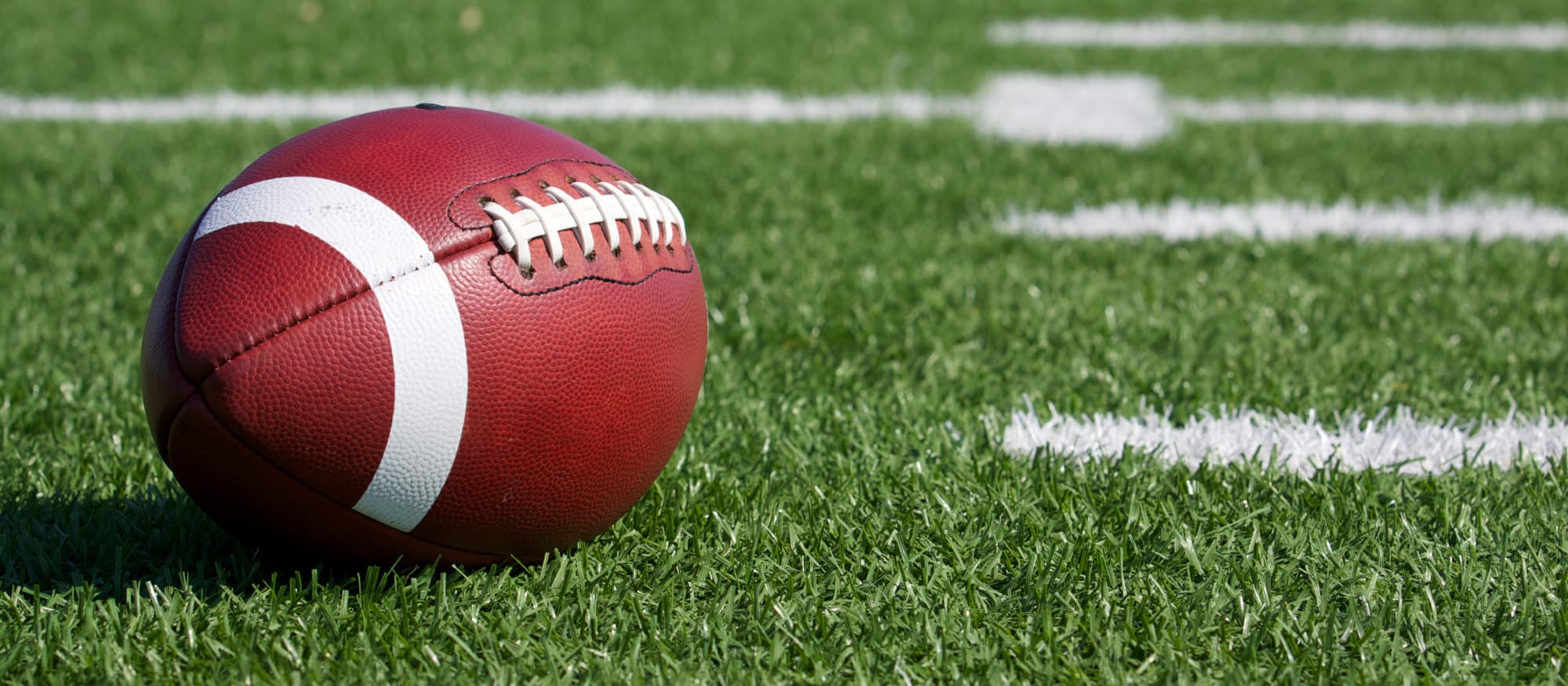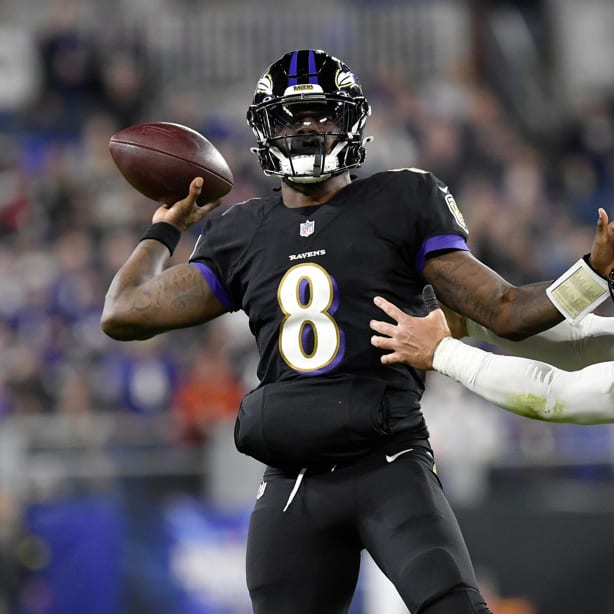No matter your fantasy skill level, this column is designed as a quick strategy primer to ready you for the upcoming fantasy season. This preview is primarily designed for standard 12-team leagues of one-QB, two-RB, three-WR, one TE, one RB/WR Flex, one K, and either one team defense or 2-3 IDP players, and a few bench spots.
Earlier this decade, it was conventional wisdom that your first two rounds should usually go RB/RB. This was due to NFL teams focusing heavily on the run and typically having only one feature RB who carried upwards of 70 percent of the team's load. But in today's NFL, many teams use more than one RB to increase longevity and keep fresh legs in the game. In addition, due to rule changes that have made the passing game more effective, QB's and WR's are putting up astounding numbers (Consider Peyton Manning and Tom Brady's 49 and 50-TD seasons as well as Randy Moss's 23 scores or Wes Welker's PPR pace a year ago, for example), so your fantasy draft strategy has to account for today's NFL. Still, don't forget RB's typically score more points than any players other than quarterbacks, and unlike QB's, you have to start at least two of them. So yes, the NFL is gearing towards committees now at RB, but that cuts both ways – while productive running backs are plentiful later in the draft, there are few true workhorses who see 20-plus carries, goal-line looks and
No matter your fantasy skill level, this column is designed as a quick strategy primer to ready you for the upcoming fantasy season. This preview is primarily designed for standard 12-team leagues of one-QB, two-RB, three-WR, one TE, one RB/WR Flex, one K, and either one team defense or 2-3 IDP players, and a few bench spots.
Earlier this decade, it was conventional wisdom that your first two rounds should usually go RB/RB. This was due to NFL teams focusing heavily on the run and typically having only one feature RB who carried upwards of 70 percent of the team's load. But in today's NFL, many teams use more than one RB to increase longevity and keep fresh legs in the game. In addition, due to rule changes that have made the passing game more effective, QB's and WR's are putting up astounding numbers (Consider Peyton Manning and Tom Brady's 49 and 50-TD seasons as well as Randy Moss's 23 scores or Wes Welker's PPR pace a year ago, for example), so your fantasy draft strategy has to account for today's NFL. Still, don't forget RB's typically score more points than any players other than quarterbacks, and unlike QB's, you have to start at least two of them. So yes, the NFL is gearing towards committees now at RB, but that cuts both ways – while productive running backs are plentiful later in the draft, there are few true workhorses who see 20-plus carries, goal-line looks and receptions out of the backfield, and they must be valued accordingly.
So let's start with some overarching quick-hit strategies to keep in mind:
- Nothing beats a great all-purpose, workhorse RB
- Productive QB's can be had in later rounds
- If you don't get one of the elite TE early, then let them go and snag a QB or another solid RB or WR in the early middle rounds. TE is deeper than ever, so if you don't draft a difference-maker, you can afford to wait.
- Take the player you want so long as you're fairly sure he won't be available in a subsequent round. The worst thing you can do is take who you're "supposed to" rather than the player you want and then see your player get drafted a few picks later.
Let's now go through some of the considerations you'll face depending on where you slot in the first round of your draft. If you have one of the top-five picks, it usually pays to get a multi-purpose, workhorse running back. Someone like Maurice Jones-Drew has more upside in yards from scrimmage due to his rushing and receiving than a WR, and it's a lot easier for him to score on short TD runs than it is for a wide receiver to catch passes in the end zone.
If you pick in the middle of the first round, a top WR like Andre Johnson or Randy Moss makes sense, though it's still defensible to take a second-tier workhorse RB like Frank Gore or Rashard Mendenhall. Typically the WR is more reliable, and the RB has more upside. In 3-WR leagues, locking down an every-week option at WR and drafting multiple upside RBs (like Ahmad Bradshaw and Michael Bush in the middle rounds) is a good strategy. But if Mendenhall or Gore stays healthy all year, he'll probably outproduce the league's top wideout.
Late in the first round is an excellent time to get a top wideout, but if Moss and Johnson are gone, it's a tougher call between receivers like Larry Fitzgerald or Calvin Johnson and backs like Ryan Mathews (rookie), DeAngelo Williams (timeshare) and Steven Jackson (health, team context). Our feeling is that you can play it any which way – RB/RB, WR.WR or WR/RB from late position in the first two rounds. The key is to take the guy you're highest on and then tailor your subsequent strategy to the composition of your roster, e.g., if you go WR/WR, target multiple upside RBs in the middle rounds.
What about grabbing a QB early in a draft? In a 12-team league or less, we'd advise against taking Drew Brees or Aaron Rodgers in the first round. While QB's score the most total points, you only have to start one of them (in 2-QB leagues, it's a totally different story, and Brees and Rodgers are absolutely first-round picks if not top overall ones), and even the 12th best fantasy QB is going to throw 25 TDs and close to 4,000 yards in today's NFL. In other words, the drop-off at the other positions as you go deeper into the draft is far steeper, and it's painful to take Brees rather than a top RB, and see the guy with Michael Turner get Jay Cutler in Round 7. So when does one jump in on the top QBs? In our opinion, no earlier than mid-to-late second round in a 12-team league, and preferably not until the third or fourth to get a Tom Brady or Tony Romo. In deeper leagues (14-or more teams), taking a top QB makes more sense as the drop-off is a little steeper, but even so we'd ideally prefer to wait until Round 2 at the earliest.
Rounds 3-6 are a combination of value (best player available) and also catering to your roster composition, e.g., if you went RB/RB, you'll probably want to look for the best WR available, but even then if none jumps out at you, you can take a top QB, TE or even another back who's simply too good to pass up. The key is to be aware of team need, league parameters and overall value, constantly balancing the three factors to arrive at the optimal decision. Rounds 7 and beyond are typically about filling out your roster (getting that QB and TE if you waited) and otherwise swinging for the fences, i.e., getting the players who have the highest ceilings. The only question to ask yourself when drafting in the later rounds is this: Which available player has the best chance to win me the league?
In most leagues Team Defense and Kickers are afterthoughts, mostly because they're so unpredictable year to year, and because you start just one of each, there are usually quality options available on your waiver wire throughout the year. In most IDP leagues (1 DL, 1 LB, 1 DB) with standard scoring (1 pt. per tackle, 3 per sack, 5 per pick, 6 per TD), we're also inclined to wait until about 10 rounds to take even the top options – as with team defense and kicker, there are usually quality replacements on the waiver wire. If your IDP league goes deeper, e.g., multiple defensive ends, linebackers, defensive backs, then, of course, the scarcity will dictate drafting top IDPs earlier.
In sum, this column is meant to be a general draft strategy primer. Your specific league parameters (scoring, No, of teams, roster requirements, owner tendencies, etc.) will often dictate that you do something differently. But in standard formats, we feel the strategic considerations enumerated above should prove useful.










